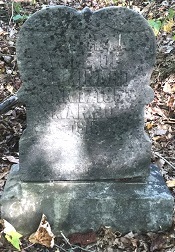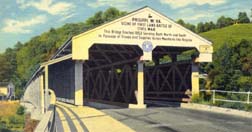
|
John
Minerd |
John Minerd was born in 1843 in
Fayette County, PA, the son of Jacob and
Ruth (Adams) Minerd of the
Fayette/Somerset County border region of southwestern Pennsylvania.
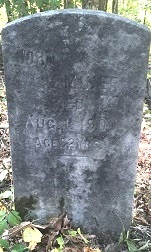
John's mother was a Native American, and he and his siblings thus were considered of mixed race (or "mulatto" in the language of the mid-1800s).
As a boy, John moved with his parents to West Virginia, settling in the 1850s in Evansville, Preston County. When he reached adulthood, he stood 5 feet, 6 inches high, with hazel eyes, dark hair and a dark complexion. He did not know how to read and write, and signed his name with an “X.” A government official once said that John was "very ignorant" reflecting his lack of education.
In 1860, John worked as a laborer, and made friends with Alexander Norris, who resided about four or five miles away. They worked for and with each other. During the early 1860s, in John's words:
I lived on Wm. Walters' place about one mile from Evansville ... and followed farming and digging coal. I worked for most every one about there. Father had a lease on Walters' place. I worked the most for Reuben Walthern ... There was Wm. Shaw, Samuel Castello, Samuel Evans, Geo. Walters, Wm. Walters [and] Wm. Larue [who] also knew me well.
During the war, but before he enlisted, John "drove a team a good deal ... for the Government. James Long was the Wagon Boss... I also drove for John Utterback... I was a sound man and able for anything up to the time I went into the army."
As the Civil War was winding down, on Feb. 13, 1865, John went to Grafton, Taylor County, WV, to enlist in the 17th West Virginia Infantry. His brothers Henry and William also served in the same regiment. Recalled friend Tyler M. Shroyer, I saw him the day he enlisted. He was in Casteel's store and stuck his head out and hallowed at me. He then appeared as stout as a buck."
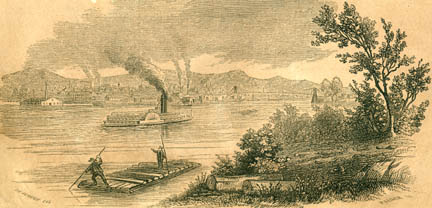 |
|
Prewar view of Wheeling, as seen from the railroad circa 1854, where John later was stationed during the Civil War, and contracted the measles |
While stationed at Wheeling, WV in May, John caught a bad case of the measles, which led to bronchitis and coughing and lung problems. According to fellow soldier, Samuel Martin of Valley Point, Preston County, "There was right smart of sickness in camp..." Recalled John:
We were sent from Clarksburg W.Va. to Wheeling ... and stood there until we were mustered out. I took the measles in Camp on the old Aetheneum. I had not doctor at all. I just laid in there. They brought me whiskey and I drank that to bring them out on me. I took a bad cold about a week or two after I had the measles and it settled in my lungs... I did not do a thing for the cold except to drink some hoar hound tea which my brother Henry Minerd made for me. I was not penned up at all with the measles... I was out at roll call every morning and evening.
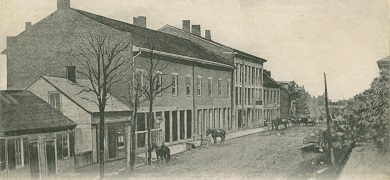 |
Clarksburg, WV during the Civil War |
John was discharged from the Army on June 30, 1865, having completed a term of 90 days of service in the military. He returned home, but about a week later, he came down with typhoid fever. Describing his lingering illness, John said:
I then had a giddiness in my head, and a cough and soreness in my breast. I came home and took a meadow to cut. My pap and brother Henry was with me. I worked until about 1 o'clock when I got so weak and trembling that I had to go home and I stopped at Jere Kimballs and got a drink of whiskey and then went home and went to bed and did not get out for about 3 months... It was the typhoid camp fever.
A physician treated John by placing poultices on his breast, which led to a breakout of a rash, causing permanent scarring. John also "used yellow root and whiskey nearly ever since I came out of the army," he said. "I have not used anything else. That relieves me in my breast. I used to let the yellow root soak in whiskey or water until it got better, then I would drink the water or whiskey off of the yellow root."
On Oct. 8, 1870, 27-year-old John married
17-year-old Martha Ann Male (1853-1916), a native of Laurel Creek, Barbour
County. The ceremony took place at the
residence of Rev. D.R. Poling near Philippi, Barbour County, WV.
They produced a brood of four sons – Peter Minard, Jacob W.
"Tug" Miner, Vernie Miner and Stephen
Minard,
and one daughter, Mary C. Minerd. One of the sons was nicknamed "Toad."
|
Philippi's historic covered bridge |
Philippi reached fame during the Civil War as the scene of the first land battle of the conflict. Both the Union and Confederate armies had used a landmark covered bridge to move troops and supplies. The bridge, which stands today, no doubt also was used often by the Minerds in the postwar years.
John and Martha moved around the area quite a bit. In his own words circa 1896, describing their migrations, he said:
When I returned from the army, I went back to Evansville, W.Va., on York's Run, on Alf Summer's place and remained there two yrs. We then moved on Sand Ridge in the same neighborhood and remained there about two yrs. From there we moved to Simpson's Creek, in Barbour Co. about 4 miles above Simpson, W.Va. I lived in there 4 or 5 yrs. I then moved on Laurel Creek but that is in the same neighborhood. I was there about 2 yrs. I then moved near Knottsville, Taylor Co. on John Knott's place. I remained there 2 yrs and worked for him all of that time. I then moved back on Laurel Creek 5 miles from Philippi ... and remained there 8 yrs. and then came here [to Claude, WV] 3 yrs. ago last March and have remained here.
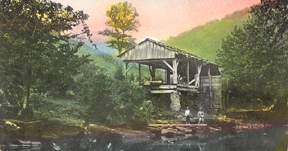 |
Old sawmill along the Tygart River near Philippi |
John Knotts testified that John "was here some 10 or 12 years. He worked for me nearly all the time he lived here for me. I furnished him work and he lived on the place and worked regular. I paid him full wages. He was a little better than the ordinary hand. He split 400 white oak rails in a single day."
Circa 1889, John applied for a pension from the federal government as compensation for his wartime illnesses. Friend Alexander Norris testified that since returning from the war, John “has been troubled with a cough and raised phlegm, his chest appears to be flat and he has had pain in same, he has suffered from shortness of breath and has been pale and thin in flesh.” As a result, Norris continued, “he has been unable to perform more than half the labor of an able bodied man during each and every year … up to the present and has lost considerable time from work during each year of said period.”
Martha's uncle William Norris testified in 1896 that he first became acquainted with John when he lived in the Minerd home in Barbour County in the 1860s. Norris also said, "When I was in Ohio he lived about 6 miles from me..." and while it's not known exactly where in Ohio this occurred, it likely was in Athens or Washington Counties. Norris recalled that he and John had worked together and that they had lived in the same house in the early 1890s. John also worked as a farm laborer for Alexander Norris, who also may have been an in-law. Said Alexander, "When the soldier worked for me, he could not perform a full day's work. He had to work to live. We gave him work when he could not actually earn what he got."
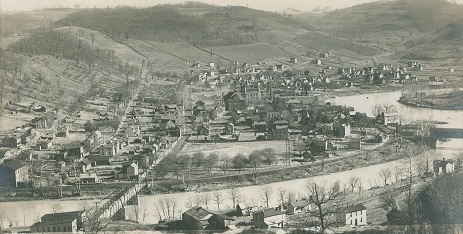 |
|
Bird's-eye view of Philippi, WV |
When the pension was granted, the news was reported, including John's name, in the Wheeling (WV)
Register.
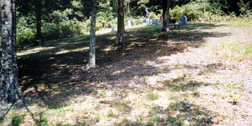
The federal government undertook a special census in 1890 of Civil War veterans and their widows. John was listed as living in Philippi, and having a disability caused by "Measles & Fever."
Circa 1893, John moved from Philippi to the small town of Hiram, Taylor County, WV. It may have been around that time that he acquired 40 acres of land near Hiram, but located within Barbour County. Friends called the tract “very steep, rough and rocky…”
Among their near neighbors were Hiram Swisher and Joseph Cline. There, son Stephen was born in 1894, with Amanda Osborn serving as midwife.
The Barbour County Personal Property Book for 1897 shows that John and his son Peter were both considered a "colored
male." They had one horse and one head of cattle on their farm.
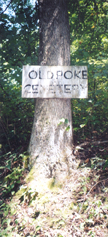
Sadly, John died in Hiram on Aug. 1, 1900, at the age of 57. He was laid to rest at the Old Poke Cemetery in the rural Chestnut Ridge hills near Philippi, named for John's brother-in-law Hiram "Poke" Mayle. A marker was erected at the grave, one of the few in Philippi with the "Minerd" spelling. Sons Vernie (age eight) and Stephen (age six) were left fatherless.
Martha outlived her husband by more than 15 years. She passed away on March 20, 1916. Her remains also were laid to rest in the Poke Cemetery. A marker also was installed at her grave, using the "Minard" spelling.
Their grave markers were recorded in a survey taken in November 2000. Then in August 2004, during a visit to the cemetery by the founder of this website and cousin-researcher Eugene Podraza, they were dismayed when no Minerd/Minard markers were found. But in a return visit in September 2024, led by Delores (Miner) Dalton and her husband Gary, the graves were discovered higher up on the hillside amid many other unmarked or fieldstone-marked graves, all untended.
Several other cousins are buried in the Old
Poke Cemetery including Haymond Mayle, the son of John's niece Martha Ellen (Mayle)
Mayle.
We are grateful to Bernard V. Mayhle of Spokane, WA, who has published his research of the Male-Mayle-Mayhle family and also has personally shared his information for our archives, as a strong base for the extensive research of courthouse and library records, and cemetery photography that have followed.
Click here to view a chart listing the several score of known marriages between the Minerd-Minard-Miner and Mayle-Male families before World War II.
Be sure to visit John's page on the TribalPages.com website compiled by Barb Nelson with significant excerpts from our research and website.
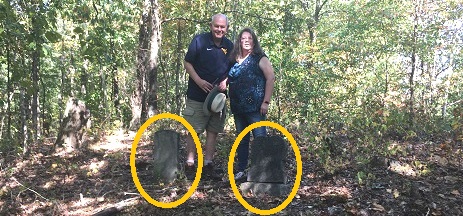 |
| Mark Miner and Delores Dalton at the Minerd graves (circled), 2024 |
|
Copyright © 2004, 2007-2009, 2017, 2022, 2024 Mark A. Miner |
|
Delores (Miner) Dalton has contributed valuable research for this biography. Wheeling sketch published in Gleason's Pictorial Drawing-Room Companion, 1854. |
